Umjetnik: Donatello
Teme: Birth And Death Christianity Religious Death Religious
Veličina: 33 x 41 cm
Muzej: Victoria and Albert Museum (London, United Kingdom)
Tehnika: Bronze
"The group called the Altare del Santo, which Donatello executed about 1447-50, composed altogether of twenty-nine pieces of sculpture. Seven free-standing bronze statues (Madonna Enthroned with Child, St Francis, St Anthony, St Daniel, St Justina, St Louis, St Prosdocimo), four bas-reliefs in bronze with the miracles of St Anthony (Miracle of the Ass, Miracle of the New-born Child, Miracle of the Repentant Son, Miracle of the Avaricious Man's Heart); four bas-reliefs in bronze with the symbols of the Evangelists, another bas-relief of the Dead Christ supported by two putti, twelve reliefs with Musician Angels, and finally a relief in Nanto stone depicting the Entombment.Unfortunately today we can have no idea of the true architectural arrangement of all this material. In fact at the end of the 16th century Donatello's altar was taken to pieces to make way for another by Gerolamo Campagna and Cesare Franco, which included Donatello's Crucifix. Finally in 1895 the present altar was designed as a reconstruction of Donatello's altar, though it is an arbitrary one only, and the introduction of the bronze Crucifix is a falsification in 19th-century taste. Modern critics have repeatedly sought to arrive at a reconstruction which most closely resembles Donatello's ideal, and perhaps the most plausible is the one which corresponds to the description, however incomplete, provided by Marc'Antonio Michiel at the beginning of the 16th century.Michiel wrote: ""In the church of the Saint above the high altar, the four bronze figures entirely in the round, grouped around Our Lady, Our Lady herself, and beneath the aforesaid figures, in the predella, two bronze narrative bas-reliefs in front and two behind. And the four Evangelists at the corners, two in front and two behind of bronze and in bas-relief, but in half length, and behind the altar beneath the predella the dead Christ with other figures around and two figures to the right and two to the left, also in bas-relief but in marble, by the hand of Donatello.""This sculptural group, rich with polychrome effects due to the use of coloured marbles, of gold, silver and bronze decorations, must have offered a remarkably brilliant spectacle. The statues of the Church of St Anthony mark another step in the artist's evolution, and it is obvious that the freestanding treatment of the figures allowed an even wider use of expressive effects. In the Miracles series Donatello adopted flattened relief on a roughened surface which served to break up the light and diffuse it, thus achieving a luminous atmosphere in which the incorporeal images appear to float. Never until now had architecture played such a prominent part in narrative relief scenes. In the Miracles it is the rhythm of the architecture that unites the jostling crowd and is felt to be the chief protagonist. The centre-piece of the altar is the group of the Madonna and Child. The Madonna is represented as an arcane priestess rising from between the faces of two smiling sphinxes at the base of her throne. It is probable that for this unusual representation of the Virgin, so oriental in feeling, neither seated nor standing but caught in the moment of rising, Donatello was inspired by some Byzantine icon or even a piece of Etruscan statuary."
Umjetnik |
|
|---|---|
Preuzimanje |
|
Dozvole |
Besplatno za nekomercijalnu uporabu. Pogledaj ispod. |
Donatello – Najgledanije djela
|
This image (or other media file) is in the public domain because its copyright has expired. However - you may not use this image for commercial purposes and you may not alter the image or remove the watermark. This applies to the United States, Canada, the European Union and those countries with a copyright term of life of the author plus 70 years.
|

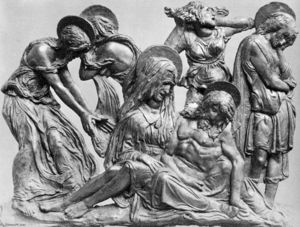

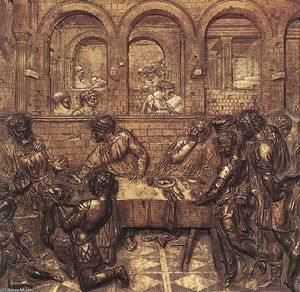
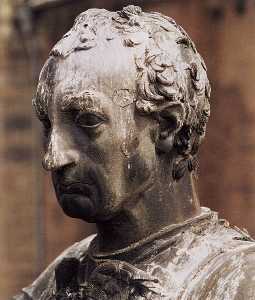
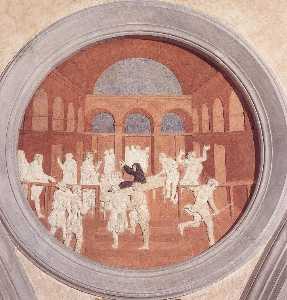
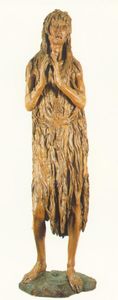
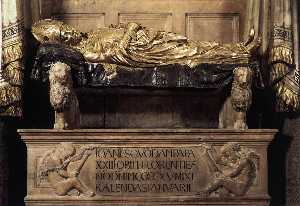

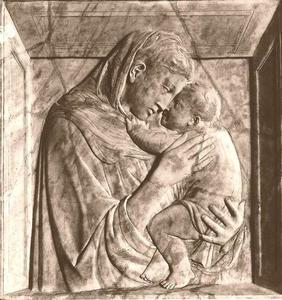
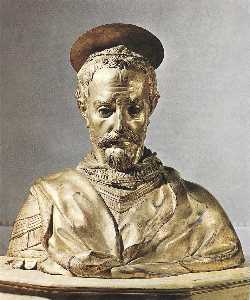
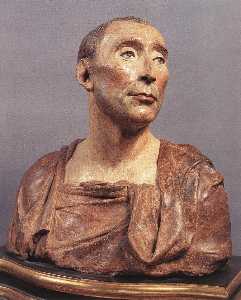
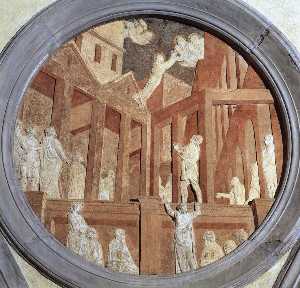
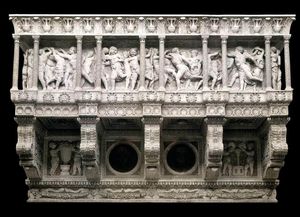
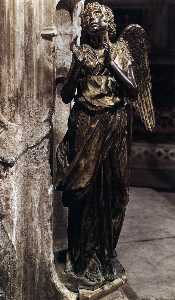
 Note that a few countries have copyright terms longer than 70 years: Mexico has 100 years, Colombia has 80 years, and Guatemala and Samoa have 75 years. This image may
not be in the public domain in these countries, which moreover do not implement the
Note that a few countries have copyright terms longer than 70 years: Mexico has 100 years, Colombia has 80 years, and Guatemala and Samoa have 75 years. This image may
not be in the public domain in these countries, which moreover do not implement the